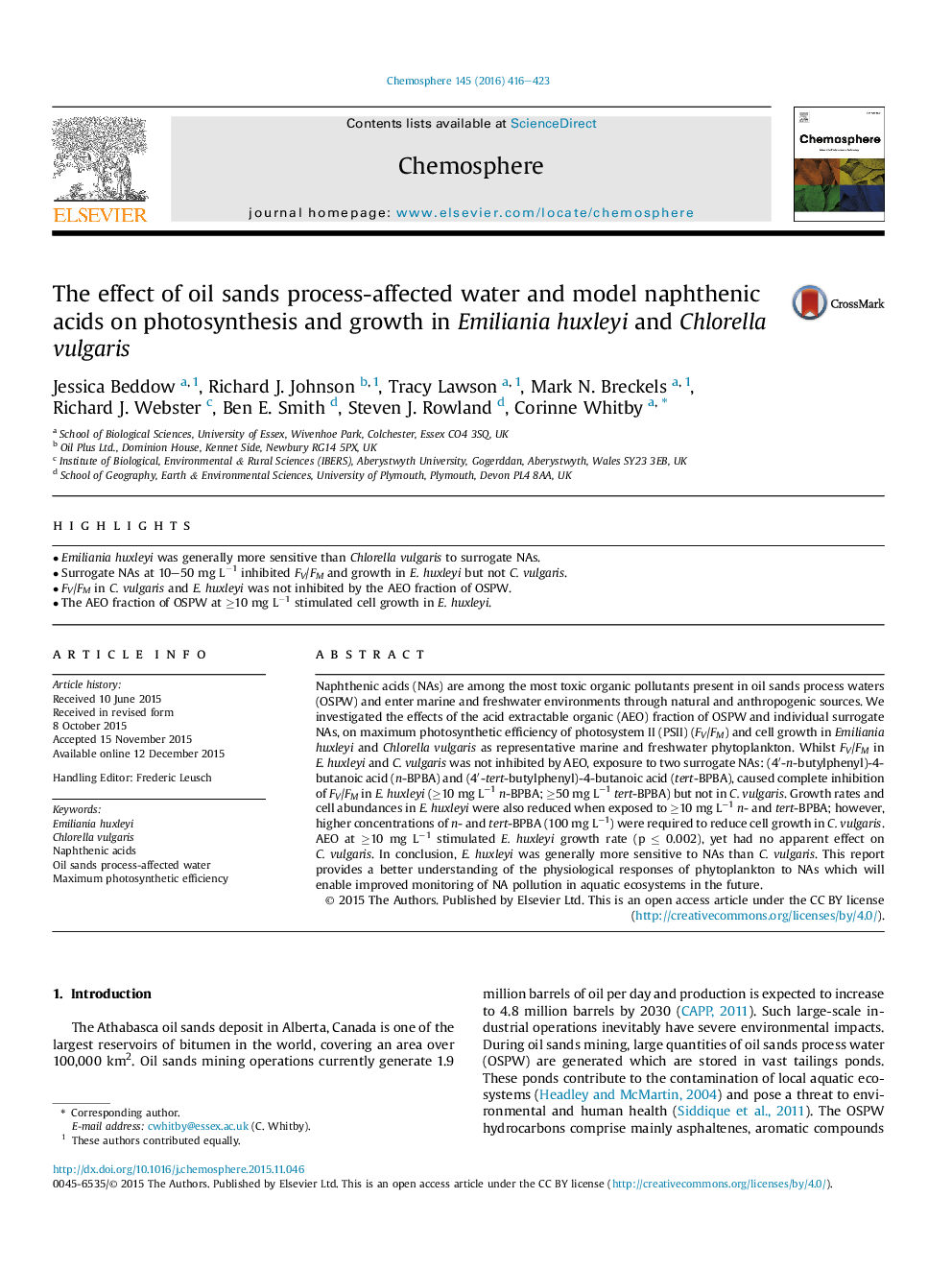| Article ID | Journal | Published Year | Pages | File Type |
|---|---|---|---|---|
| 6307110 | Chemosphere | 2016 | 8 Pages |
Abstract
Naphthenic acids (NAs) are among the most toxic organic pollutants present in oil sands process waters (OSPW) and enter marine and freshwater environments through natural and anthropogenic sources. We investigated the effects of the acid extractable organic (AEO) fraction of OSPW and individual surrogate NAs, on maximum photosynthetic efficiency of photosystem II (PSII) (FV/FM) and cell growth in Emiliania huxleyi and Chlorella vulgaris as representative marine and freshwater phytoplankton. Whilst FV/FM in E. huxleyi and C. vulgaris was not inhibited by AEO, exposure to two surrogate NAs: (4â²-n-butylphenyl)-4-butanoic acid (n-BPBA) and (4â²-tert-butylphenyl)-4-butanoic acid (tert-BPBA), caused complete inhibition of FV/FM in E. huxleyi (â¥10 mg Lâ1n-BPBA; â¥50 mg Lâ1tert-BPBA) but not in C. vulgaris. Growth rates and cell abundances in E. huxleyi were also reduced when exposed to â¥10 mg Lâ1n- and tert-BPBA; however, higher concentrations of n- and tert-BPBA (100 mg Lâ1) were required to reduce cell growth in C. vulgaris. AEO at â¥10 mg Lâ1 stimulated E. huxleyi growth rate (p â¤Â 0.002), yet had no apparent effect on C. vulgaris. In conclusion, E. huxleyi was generally more sensitive to NAs than C. vulgaris. This report provides a better understanding of the physiological responses of phytoplankton to NAs which will enable improved monitoring of NA pollution in aquatic ecosystems in the future.
Related Topics
Life Sciences
Environmental Science
Environmental Chemistry
Authors
Jessica Beddow, Richard J. Johnson, Tracy Lawson, Mark N. Breckels, Richard J. Webster, Ben E. Smith, Steven J. Rowland, Corinne Whitby,
